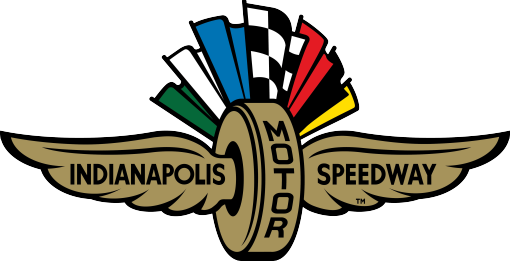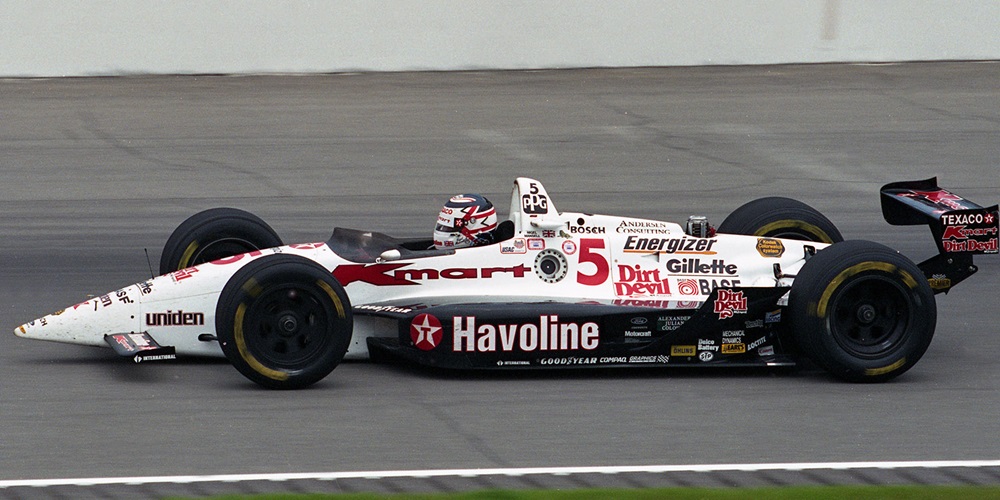For a seven-day period in September 1993, Nigel Mansell was the only man in history to concurrently hold both the Formula One and IndyCar championship titles.
A top F1 star since the mid-1980s, Mansell finally won the 1992 F1 title in dominant fashion. But he couldn’t come to terms with team owner Frank Williams on a new contract, and with all of the other top F1 seats taken, Mansell stunned the world by announcing that he would move to America to contest the 1993 PPG IndyCar World Series with Newman/Haas Racing.
As a 39-year old Indy car rookie, Mansell arrived with a reputation as a polarizing figure. Throughout his 15-year F1 career, the mustachioed Englishman played the underdog role to the hilt, making him a favorite of fans and Britain’s “Fleet Street” tabloid media. Yet Mansell’s relationships with the people he interacted with on a regular basis – his team and the specialty F1 press – often were rancorous.
Mansell settled in smoothly with Newman/Haas, and he also adapted quickly to the technique of driving on an oval – something he had never done in his long career. Driving a car set up by his veteran teammate Mario Andretti, Mansell lapped under the track record at his first oval test at Phoenix International Raceway, creating quite a stir.
“There were 90 media there from nine countries,” NHR public relations man Michael Knight said. “We organized a photo shoot with Carl and Paul Newman and Nigel, and that’s when Paul turned to Nigel and said, ‘This is going to be ‘The Great Adventure!’ That was a line we used the rest of the year.
“When the shoot was done, Carl leaned over and whispered in my ear, ‘I think this is going to be bigger than we thought!’”
Expectations shot even higher when Mansell took advantage of a botched call by officials to win his debut IndyCar race on the street course at Surfers Paradise, Australia. With his confidence sky-high, Mansell attacked practice for the next race at the Phoenix oval with vigor. But his lack of oval experience caught him out and he crashed heavily, the gearbox of his Lola/Ford-Cosworth punching a 12-inch hole in the concrete wall.
There was a hole in Mansell’s back, too; noted surgeon Dr. Terry Trammell said he had never seen such significant damage to muscle and fatty tissue. For weeks, Trammell and Dr. Steve Olvey drained fluid from Mansell’s lower back, often several times daily. During this period, Mansell qualified on pole position and finished third in the Long Beach Grand Prix. Two weeks before the start of Indianapolis 500 practice, Mansell finally underwent surgery to correct the problem, and he spent the month of May driving in pain.
Still, he performed to his usual high standard.
“Nigel seemed to rise to the occasion,” Newman/Haas team manager Jim McGee said. “Like an actor, he always seemed to come forward with his best performance when the pressure was on. He took to Indy like it was the most natural thing in the world. He knew how to place the car in traffic on an oval like he had been doing it for 25 years.”
Despite limited practice due to his injuries, Mansell qualified eighth for the “500.” He led the race three times for 34 laps and was in front with 15 laps to go. But his lack of oval racing experience again showed when he was bested on a restart by Emerson Fittipaldi and Arie Luyendyk, relegating him to a third-place finish. Mansell was the first rookie since Donnie Allison in 1970 to complete the full 500 miles.
“The team did a fantastic job, and what mistakes were made today were made by me,” Mansell said after the race. “It’s the first time I’ve raced on an oval, and all the procedures are new to me.”
Remarkably, Mansell’s biggest successes in the summer of 1993 came on oval tracks. The week after the Indianapolis 500, he won at the Milwaukee Mile, and he added victories at Michigan International Speedway, New Hampshire Motor Speedway and Nazareth Speedway on the way to clinching the PPG IndyCar World Series championship.
The New Hampshire race, in which Mansell passed Penske Racing teammates Emerson Fittipaldi and Paul Tracy in the last 15 laps for the win, is considered one of the best Indy car races of all time.
“Running on an oval is daunting, it’s frightening, it’s exhilarating, it’s challenging – all those things put together in one sentence,” Mansell said. “It’s just mind-boggling, actually. And then to have 20-odd cars racing around at those speeds wheel-to-wheel … it’s something I had never experienced before.”
Racing fans across North America responded to Mansell’s presence, flocking to venues such as Toronto, Road America and Laguna Seca in record number to see the reigning F1 champion in action. Media attention remained intense as well; Mansell attracted so much international media attention that the Indianapolis Motor Speedway remodeled its infield media center to add 100 workspaces.
His remarkable 1993 season was loosely documented by Dire Straits songwriter Mark Knopfler in the song “Speedway at Nazareth,” which name checks Indianapolis Motor Speedway and a dozen other Indy car race venues.
“In that two-year period, I think I learned more professionally than in any other period in my life,” PR man Knight said. “All the international attention, and the sheer scale of it. I joked that it must have been what it was like when Elvis was king.”
However, Mansell’s fortunes plummeted in 1994 as the Penske team dominated the IndyCar season. The nadir came at Indianapolis, where Mansell was eliminated in a bizarre accident under caution that ended with Dennis Vitolo’s car straddled on top of Mansell’s machine. By that time, Mansell was already distracted by the prospect of a return to Formula One. Recruited by the Williams team after Ayrton Senna’s death, Mansell half-heartedly finished his contract with Newman/Haas while driving in F1 races that didn’t conflict with the IndyCar schedule.
By the end of the ’94 season, he had pretty much worn out his welcome with Andretti and the Newman/Haas team.
“I guess if Ronnie Peterson was the best team-mate I ever had, Nigel Mansell was the worst,” Andretti said. “He had that charm when he needed it, but he was a manipulator. I had a lot of respect for him as a driver, but not as a man.”
Longtime F1 journalist Maurice Hamilton covered several of Mansell’s Indy car races in 1993 and ’94, and he confirmed the change in mood between years.
“At Milwaukee in 1993, the team guys were having a go at me, saying I was typical of F1 people and being unfair to poor Nigel – he really was a great guy and completely misunderstood,” Hamilton said. “A year later, after Nigel had shown his less pleasant side, they all said I was absolutely right!
“But Nigel was fantastic value, whatever way you look at him. An amazing racer. It was just the bit when he was out of the car that was so hard to deal with.”
For his part, Mansell still retains warm feelings about his American adventure.
“I enjoyed it very much,” he said. “Obviously winning in ’93 was like a dream come true – winning both world titles back to back was sensational. It could have been more enjoyable during the last year. We had a couple of wins that escaped us in ’94, which we should have converted.
“I loved the time there, and I think the people were great.”




